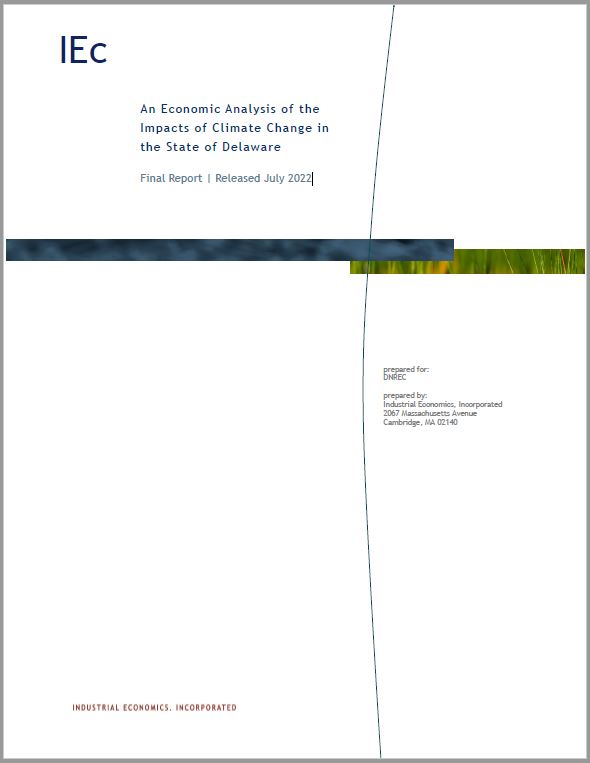Climate change looks different depending on where you are in the world. In Delaware, climate change primarily takes the form of sea level rise, increasing temperatures and more frequent intense storms, including heavy precipitation and flooding.
While the Earth’s climate naturally changes over millions of years, scientists agree that human activities are causing the Earth’s climate to warm at unprecedented speed. Excessive greenhouse gas emissions contribute to changes that have already been observed in Delaware, such as hotter temperatures and more extreme precipitation. The continued health and quality of life of Delaware’s residents are dependent upon reducing its emissions of greenhouse gases and maintaining and improving the state’s resilience to the impacts of climate change.
Over the coming years, it is projected that Delaware will face higher temperatures, more high heat days, increased heavy precipitation events and sea level rise.
The impacts from each of these threatens the state’s industries, infrastructure, natural resources and health of residents.
Sea Level Rise
Increased Temperatures
Heavy Precipitation and Flooding
A warming climate contributes to intensification of the water cycle, meaning that when rainfall occurs, it tends to be more intense, with an accompanying increased risk of flooding. The number of very wet days, with more than two inches of rainfall within 24 hours, is projected to increase. The frequency and intensity of precipitation events is also projected to increase over the coming century.
The Delaware Climate Change Impact Assessment breaks down past and projected future climate trends in Delaware, and what these trends mean for Delaware’s public health, water resources, agriculture, infrastructure and ecosystems. Read the full report or a 12-page summary.
The Delaware Sea Level Rise Vulnerability Assessment takes a deep dive into the impacts that sea level rise has on the state. The assessment includes details on:
The Delaware Climate + Health Conference Summary Report highlights findings from the 2017 conference, which explored how climate change is affecting public health in Delaware. The conference particularly focused on extreme heat, air quality and vector-borne diseases.
 To fully understand the costs of climate change, and to effectively complete cost/benefit analysis on proposed climate adaptation strategies, it is important to understand the costs of failing to act on climate risks. From transportation delays due to flooded roads to lost wages when it’s too hot out to work, the costs of unmitigated climate change are high. The Economic Analysis of the Impacts of Climate Change in the State of Delaware report estimates the economic costs of climate risks posed in key sectors such as transportation, public health, and agriculture in Delaware.
To fully understand the costs of climate change, and to effectively complete cost/benefit analysis on proposed climate adaptation strategies, it is important to understand the costs of failing to act on climate risks. From transportation delays due to flooded roads to lost wages when it’s too hot out to work, the costs of unmitigated climate change are high. The Economic Analysis of the Impacts of Climate Change in the State of Delaware report estimates the economic costs of climate risks posed in key sectors such as transportation, public health, and agriculture in Delaware.
This report is not a comprehensive analysis of all possible climate impacts. The impacts chosen were derived from the 2014 Delaware Climate Impact Assessment and the 2013 Sea Level Rise Vulnerability Assessment. In total, 26 impact categories across 5 sectors were analyzed, including Natural Resources (DNREC), Human Health (DHSS), Transportation (DelDOT), Agriculture (DDA) and Human Safety (DSHS).
Key Takeaways – Statewide:
For the Economic Analysis of the Impacts of Climate Change in the State of Delaware report, DNREC contracted with Industrial Economics, Incorporated, (IEc) to examine the economic impacts that climate change is projected to have on Delaware.
Related Topics: climate, climate change, climate coastal energy, energy, plan